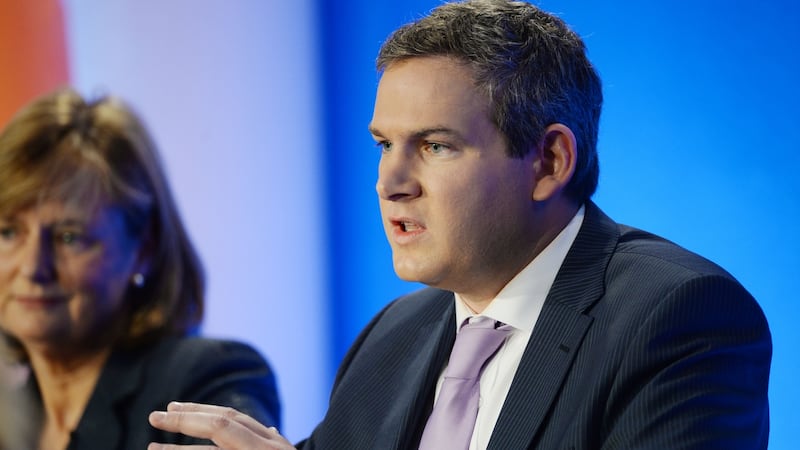Among the most prominent campaigners for Leo Varadkar during the Fine Gael leadership campaign were TDs who were once seen as comprising an “awkward squad” of younger TDs in the last Dáil.
Eoghan Murphy (Dublin Bay South), Sean Kyne (Galway West), Pat Deering (Carlow-Kilkenny) and Brendan Griffin (Kerry) were leading members of what became known as the “five-a-side”, a group of 10 male TDs all newly elected in 2011.
The group was seen as a thorn in the side and as a nuisance by the party’s leadership, and individual members received dressings-down from the Taoiseach Enda Kenny for their perceived impertinence.

The “five-a-side” lasted for three years, between 2011 and 2014, before it fizzled out. Its members, especially Murphy, argued for wholesale reform of the Dáil. The group also advocated for Fine Gael policies and set themselves as defenders of those ideals from the “baleful” influence of the party’s former coalition partners, Labour.
The members were all young and a mix of urban and rural, who socialised together before coming together to form a group.
One of it members, the former Cork TD Noel Harrington recalls: “We would meet for a meal or [in] a room in Leinster House. We always socialised and kind of clicked. It evolved from there. We met once or twice every month.”
As Griffin recalls: “It was just a group of TDs who were new to the Dáil. We were spending a lot of time in each other’s company. It was an organic kind of a spawning.
“We were in the workplace. Naturally we talked about work. All of us were passionate about the jobs and the state of the country.”
The original “five-a-side” were: Murphy; Kyne; Griffin; Harrington; Brian Walsh (Galway West); Martin Heydon (Kildare South); Sean Conlan (Cavan-Monaghan); Paul Connaughton (Galway East); Anthony Lawlor (Kildare North); and Deering.
Left the group
Of those, only half were returned to the 32nd Dáil, and of those, Heydon was one of the TDs who left the group “early doors”, to use the Ron Atkinson phrase.
When the new TDs arrived into Leinster House in 2011, they noticed they had entered a party that was still very divided; with some still licking their wounds after the heave against Kenny the summer before.
“Any time you spoke giving a different point of view, one part of the party would claim you were a rump and the other side would try to claim you as theirs. What we wanted to do was promote policy issues and ideas away from the toxicity of the parliamentary party.
“None of us had been involved in the heave. We simply wanted space to discuss ideas and policies and that’s how it happened.”
Kenny soon got wind of the “five-a-side” and hauled one or two of its more prominent members, including Murphy, into his office and told them to stop organising meetings.
They stopped for a while, but came back together after Labour minister Brendan Howlin’s early efforts to curb public sector allowances came to naught.
“We hated the command and control style that was going on in the party. We could not go to the parliamentary party without being seen as rebels.”
After a while the group was tolerated. It came up with reform ideas and on one occasion the Taoiseach came into the Dáil to hear all 10 TDs argue for parliamentary reform during topical issues.
Disagreed with government policy
As a group it also published opinion pieces in national news organisations including The Irish Times, that openly disagreed with government policy on the Croke Park agreement and on taxation policy.
“For me as an individual within a large parliamentary party,” said Griffin, “it was hard to get access to [the] minister of the day and you sensed people were not listening. Collectively you had a better chance of being listened to. We were not ideological as such although sometimes we were portrayed as Tories and right-wing guys. If you look at the background we came from a wide church, from west Kerry, to Connemara to south Dublin.
“A lot of us were hauled in (for chiding). I remember well having the long walk over to Government buildings.”
Noel Harrington recalls: “We were seen as a nuisance but we were a bit of a counterweight to Labour in government. We were used when it suited the Government. We were patronised, seen as upstarts.
“Enda Kenny was not thrilled. He was not interested in what we were about. He was very keen to see that there was no strong cliques in the party.”
But Harrington adds that ministers could use the “five-a-side” for their own purposes. “We were a useful kind of threat for ministers who could say to Labour, there’s a group in the party who will oppose this.”
Indeed, of the five survivors it is certain that all supported Leo Varadkar. And of the 10, the only identifiable Simon Coveney supporter was his Cork colleague, Harrington.
The group stopped meeting from 2014, but it’s clear since then that some of its more prominent members are no longer playing in the offside position and have indeed graduated to the premiership.


















